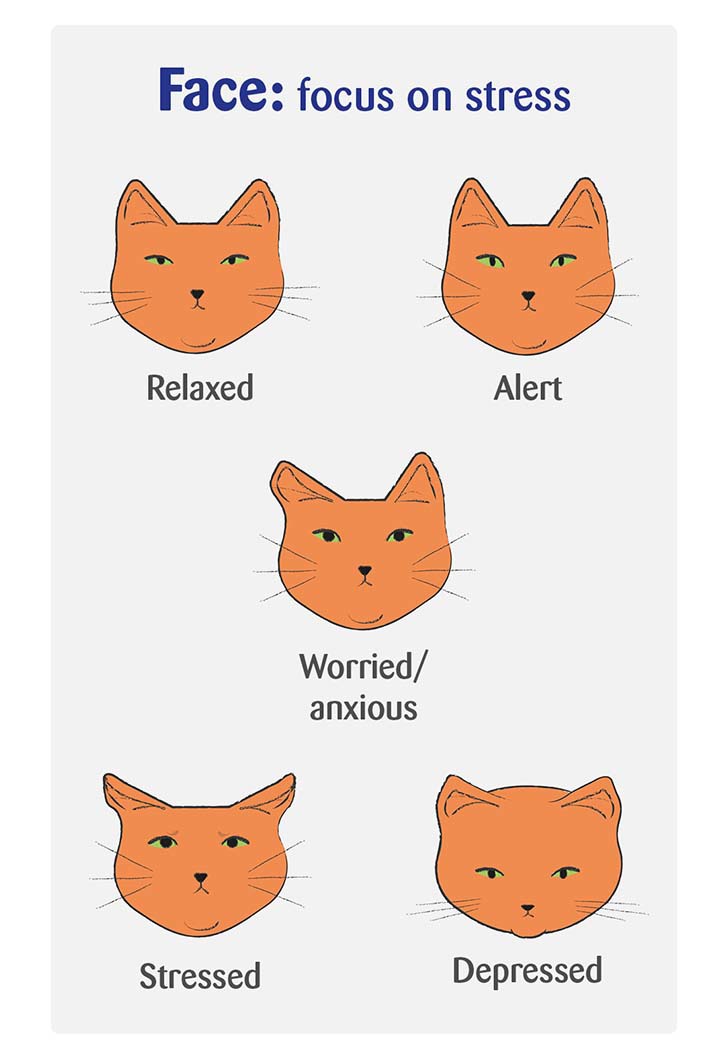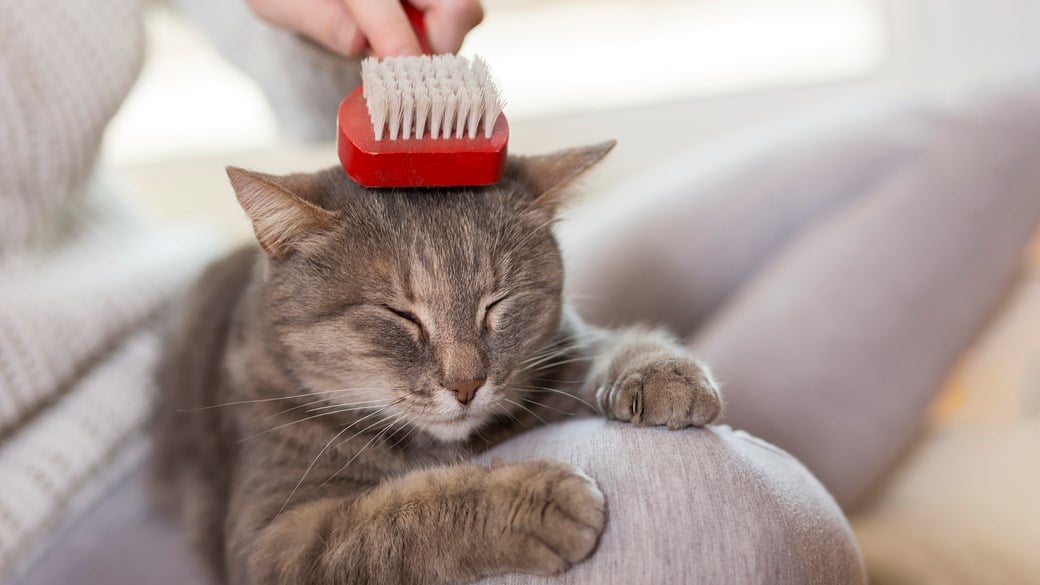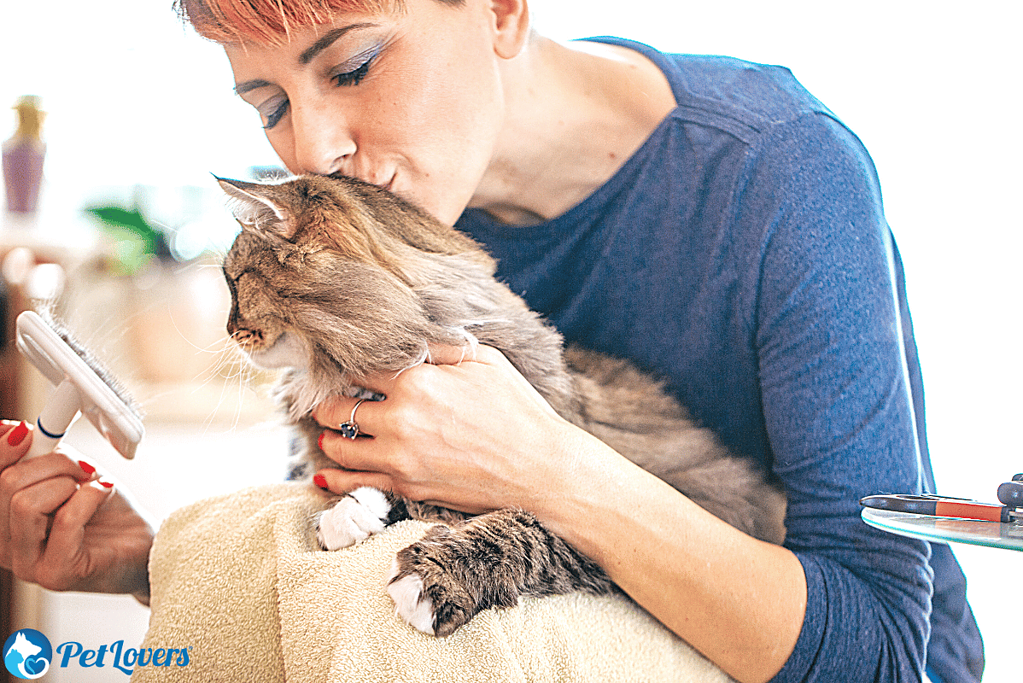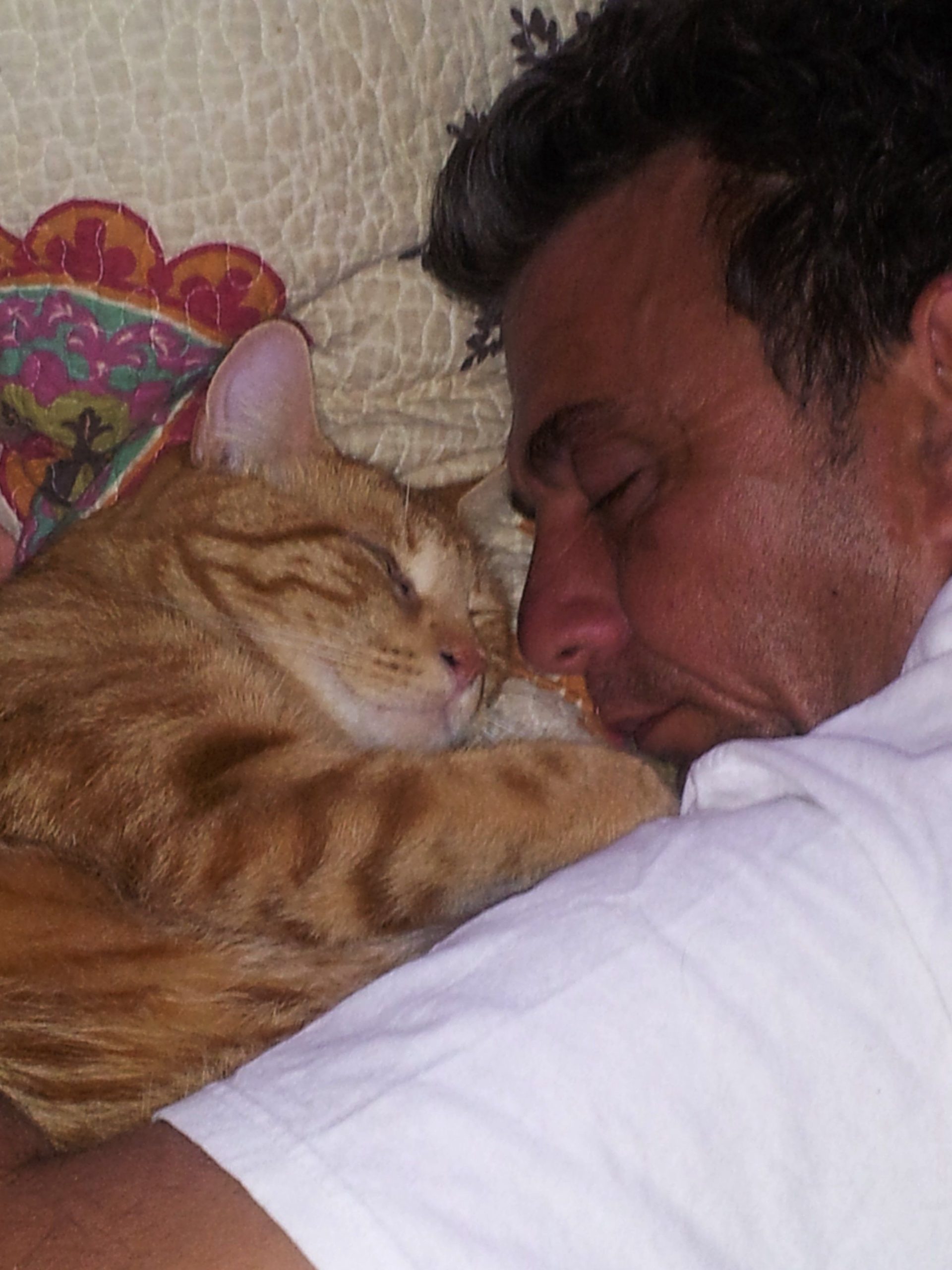Contents
- I. Introduction to Cat Shedding and Stress
- II. Understanding Cat Shedding
- III. Causes of Cat Shedding
- IV. Recognizing Signs of Stress in Cats
- V. The Relationship Between Stress and Cat Shedding
- VI. Do Cats Shed More When Stressed?
- VII. How to Identify if Your Cat is Stressed
- VIII. Common Triggers of Stress in Cats
- IX. Effects of Stress on Cat Health
I. Introduction to Cat Shedding and Stress

Cat shedding is a natural process that occurs as part of a cat’s regular grooming routine. Cats have a double coat consisting of an outer layer of guard hairs and an inner layer of downy fur. Shedding helps cats get rid of old or damaged fur and allows new fur to grow in its place. However, excessive shedding can sometimes be a sign of underlying health issues or stress.
Stress can affect cats in various ways, including their shedding patterns. When cats experience stress, whether it’s due to changes in their environment, routine, or interactions with other pets or humans, it can trigger an increase in shedding. This shedding can be more apparent and noticeable than normal shedding.
1. How does stress affect a cat’s shedding?
When a cat is stressed, it can disrupt their normal grooming routine. They may groom themselves excessively or exhibit other stress-related behaviors such as excessive vocalization, aggression, or hiding. This excessive grooming can lead to increased shedding as the cat pulls out more fur than usual.
Signs of stress-related shedding may include an increase in hairballs, patches of thinning fur or bald spots, and excessive shedding in specific areas such as the belly or tail. It’s important to note that these signs can also indicate other health issues, so it’s essential to consult with a veterinarian for a proper diagnosis.
Reducing stress in cats can help minimize excessive shedding. Some strategies to consider include providing a calm and stable environment, sticking to a consistent routine, offering plenty of mental and physical stimulation, and ensuring access to hiding places or safe spaces where the cat can retreat when feeling stressed.
4. When should you be concerned about your cat’s shedding?
If you notice a sudden and significant increase in your cat’s shedding or if it is accompanied by other concerning symptoms such as lethargy, changes in appetite, or skin abnormalities, it’s important to seek veterinary attention. These signs could indicate underlying health issues that require medical intervention.
5. Can excessive shedding be a sign of other health problems?
Yes, excessive shedding can sometimes be a symptom of other health problems such as allergies, hormonal imbalances, parasites, or skin infections. It’s crucial to monitor your cat’s overall health and consult with a veterinarian if you have any concerns about their shedding patterns.
Understanding the relationship between cat shedding and stress can help pet owners better care for their feline companions. By creating a stress-free environment and addressing any underlying health issues, you can help reduce excessive shedding and keep your cat healthy and happy.
II. Understanding Cat Shedding

II. Understanding Cat Shedding
Cat shedding is a natural process that all cats go through. It is a way for them to get rid of old or damaged hair and replace it with new hair. However, the amount of shedding can vary depending on various factors, including the cat’s breed, health, and environment. In this section, we will explore the different aspects of cat shedding and provide insights into when you should be worried about excessive shedding.
Why do cats shed?
Cats shed their fur for several reasons. One main reason is to regulate their body temperature. During warmer months, cats tend to shed more to keep themselves cool. On the other hand, during colder months, they shed less to preserve body heat. Shedding also helps cats to get rid of old or damaged hair, preventing it from becoming matted or tangled.
Factors affecting shedding
Various factors can influence how much a cat sheds. The breed plays a significant role, as some breeds, like the Siamese or the Sphinx, shed less compared to others. The cat’s health is also crucial; underlying health issues can lead to excessive shedding. Additionally, the environment plays a role in shedding. Cats that spend more time outdoors tend to shed more due to exposure to different elements and weather conditions.
Normal shedding vs. excessive shedding
It is essential to differentiate between normal shedding and excessive shedding. Normal shedding involves a consistent, moderate amount of hair loss throughout the year. However, if you notice an excessive amount of hair loss or bald patches on your cat’s coat, it could be a sign of an underlying health issue or stress. It is crucial to monitor your cat’s shedding patterns and consult a veterinarian if you have any concerns.
Managing shedding
While shedding is a natural process, there are ways to manage it. Regular grooming can help remove loose hair and prevent it from spreading all over your home. Brushing your cat’s coat regularly, especially during shedding seasons, can minimize hair accumulation. Additionally, a balanced diet rich in essential nutrients can promote healthy skin and coat, reducing excessive shedding.
In conclusion, understanding cat shedding is essential for every cat owner. By knowing the reasons behind shedding, the factors that influence it, and how to manage it, you can ensure your cat’s coat remains healthy and shiny. Remember to pay attention to any excessive shedding and consult a veterinarian if necessary.
III. Causes of Cat Shedding

Cat shedding is a natural and normal process that occurs in all feline breeds. However, certain factors can contribute to increased shedding in cats. Let’s explore some of the common causes of cat shedding.
Dietary Factors
A cat’s diet plays a crucial role in maintaining healthy fur and minimizing shedding. A diet lacking essential nutrients, such as Omega-3 fatty acids, can result in dry and brittle fur, leading to increased shedding. Ensure that your furry friend’s diet consists of high-quality cat food that provides all the necessary nutrients for a healthy coat.
Seasonal Changes
Cats, like many animals, tend to shed more during certain seasons. As the weather gets warmer, they shed their thick winter coat to adapt to the rising temperatures. This shedding process helps regulate their body temperature. Similarly, during fall, cats may experience increased shedding as they prepare for the growth of a new winter coat.
Stress and Anxiety
Cats are sensitive creatures, and stress or anxiety can trigger excessive shedding. Major changes in their environment, such as moving to a new home, the introduction of a new pet, or loud noises, can cause stress and lead to increased shedding. It’s important to create a calm and stable environment for your cat to minimize stress-related shedding.
Health Issues
Underlying health problems can also contribute to excessive shedding in cats. Skin conditions, allergies, hormonal imbalances, and parasites such as fleas or ticks can cause your cat to shed more than usual. If you notice excessive or sudden shedding accompanied by other symptoms like itching or skin irritation, it’s advisable to consult a veterinarian for a proper diagnosis and treatment.
Poor Grooming Habits
Cats are known for their meticulous grooming habits. Regular grooming helps remove loose fur and prevents it from accumulating on your furniture and clothes. However, if your cat is unable to groom itself properly due to obesity, arthritis, or other health issues, the excess fur may result in increased shedding. Help your cat maintain good grooming habits by brushing them regularly and ensuring they have easy access to clean themselves.
IV. Recognizing Signs of Stress in Cats

Just like humans, cats can experience stress too. However, unlike humans, cats cannot express their emotions verbally, making it a bit more challenging to detect when they are stressed. It is important for cat owners to be aware of the signs of stress in their feline companions so that they can provide the necessary support and care.
1. Changes in Behavior
When a cat is stressed, they may exhibit changes in their behavior. This could include excessive grooming or licking, hiding more often, or becoming more aggressive or withdrawn. Keep an eye out for any sudden or unusual changes in your cat’s behavior as it could be a sign of stress.
2. Appetite and Weight Fluctuations
Stress can also affect a cat’s appetite and weight. Some cats may lose interest in food and experience weight loss, while others may resort to stress eating and gain weight. Monitor your cat’s eating habits and weight to ensure they are maintaining a healthy balance.
3. Urinary Issues
Stress can also manifest in urinary issues in cats. They may start urinating outside their litter box or have frequent accidents. Look out for any changes in their litter box behavior or any signs of discomfort during urination.
4. Excessive Vocalization
When cats are stressed, they may resort to excessive vocalization as a way to communicate their discomfort. Pay attention to any increased meowing, growling, or hissing as it could indicate stress or anxiety.
5. Physical Symptoms
Stress can also have physical manifestations in cats. They may develop skin irritations, excessive shedding, or digestive issues. Keep an eye out for any noticeable changes in their physical appearance or any signs of discomfort.
6. Social Withdrawal
Cats are typically social animals, but when they are stressed, they may withdraw from social interactions. They may avoid human contact or even isolate themselves from other pets in the household. Observe your cat’s behavior and make note of any changes in their social interactions.
By recognizing the signs of stress in cats, you can take appropriate measures to help alleviate their discomfort. If you notice any of these signs persisting or worsening, it is recommended to consult with a veterinarian who can provide further guidance and support.
V. The Relationship Between Stress and Cat Shedding

When it comes to our feline friends, shedding is a natural process that helps them maintain a healthy coat. However, cat owners often wonder if their furry companions shed more when they’re stressed. Let’s dive into the relationship between stress and cat shedding.
1. The Impact of Stress on Cat Shedding
Just like humans, cats can experience stress. Situations such as moving to a new home, introducing a new pet, or changes in their daily routine can trigger stress in cats. When cats become stressed, it can have an impact on their overall health, including their coat.
Stress triggers the release of hormones in cats, which can affect their hair growth and shedding patterns. In some cases, cats may experience excessive shedding due to stress. This shedding is often temporary and resolves once the underlying stressor is addressed.
2. Signs of Stress in Cats
Recognizing the signs of stress in your cat is crucial to addressing the issue effectively. Some common signs of stress in cats include:
- Increased vocalization
- Changes in appetite
- Excessive grooming
- Urinating outside the litter box
- Aggression or withdrawal
- Marked changes in behavior
If you notice any of these signs in your cat, it’s important to consult with your veterinarian to rule out any underlying health issues and to develop a plan to manage your cat’s stress.
3. Managing Stress-Related Shedding
To help reduce stress-related shedding in your cat, there are several steps you can take:
- Create a calm and safe environment for your cat.
- Stick to a consistent routine to minimize disruptions.
- Provide plenty of mental and physical stimulation through play and interactive toys.
- Consider using pheromone diffusers or sprays to promote relaxation.
- Give your cat a balanced and nutritious diet to support a healthy coat.
By addressing the underlying stressors and providing a supportive environment, you can help minimize stress-related shedding in your cat.
4. When to Seek Veterinary Advice
If your cat’s shedding is excessive, persistent, or accompanied by other concerning symptoms, it’s essential to seek veterinary advice. Your veterinarian can perform a thorough examination to rule out any underlying medical conditions and provide appropriate treatment.
Remember, occasional shedding is normal for cats, but if you notice a sudden increase in shedding or any other significant changes, it’s always better to consult with a professional.
VI. Do Cats Shed More When Stressed?
In times of stress, cats may experience changes in their grooming habits, which can result in increased shedding. Stress can be caused by various factors such as changes in the environment, introduction of new pets, loud noises, or separation anxiety. When cats feel anxious or overwhelmed, they may exhibit excessive grooming behaviors, leading to more shedding than usual.
1. How does stress affect a cat’s grooming habits?
Stress can disrupt a cat’s normal grooming routine. Some cats may groom excessively as a way to self-soothe and alleviate anxiety. This excessive grooming can lead to the removal of excess hair, resulting in increased shedding. Additionally, cats may also develop skin conditions or allergies due to stress, which can further contribute to excessive shedding.
No, not all cats will shed more when stressed. Cats have different temperaments, and some may be more prone to stress-related shedding than others. Factors such as age, breed, and previous experiences can also influence how a cat responds to stress. It’s essential to monitor your cat’s behavior and grooming habits to understand how they personally react to stress.
3. How can I help reduce my cat’s stress and shedding?
Creating a calm and comfortable environment for your cat can help reduce stress and minimize shedding. Provide a designated space where your cat can retreat to when feeling anxious. Use pheromone diffusers or calming sprays to promote relaxation. Spend quality time with your cat, engaging in play and providing affection. Additionally, consult with a veterinarian for advice on possible stress-reducing supplements or medications.
4. Is increased shedding always a sign of stress in cats?
No, shedding can also be influenced by seasonal changes or medical conditions. It’s crucial to consider other factors and observe your cat’s overall behavior and health. If shedding is accompanied by other concerning symptoms such as loss of appetite, lethargy, or skin issues, it’s best to consult with a veterinarian for a proper diagnosis.
5. Can grooming help reduce a cat’s stress?
Grooming can be a comforting activity for cats, and regular brushing can help reduce stress. It promotes bonding between you and your cat and provides a sense of security. Brushing also helps remove loose hair before it is ingested during excessive grooming. However, it’s essential to be gentle and patient while grooming to avoid causing additional stress to your cat.
Overall, it’s important to monitor your cat’s shedding patterns and behavior to determine if stress is a contributing factor. Creating a stress-free environment and providing proper care can help minimize shedding and ensure your cat’s overall well-being.
VII. How to Identify if Your Cat is Stressed
Just like humans, cats can also experience stress. It’s important as a cat owner to be able to recognize the signs of stress in your feline friend. Here are some indicators that your cat may be stressed:
1. Changes in Behavior
If your cat suddenly starts behaving differently, it could be a sign of stress. Look out for excessive grooming, hiding, aggression, or avoidance. These changes in behavior can often indicate that your cat is feeling stressed or anxious.
2. Loss of Appetite
When cats are stressed, they may lose their appetite. If your cat suddenly stops eating or shows a reduced interest in food, it could be a cause for concern. Monitor their eating habits closely and consult a veterinarian if the issue persists.
3. Inappropriate Elimination
Stressed cats may start urinating or defecating outside of their litter box. If you notice your cat eliminating in unusual places, it could be a sign of stress. It’s important to rule out any medical conditions with a vet, but if there are no underlying health issues, stress might be the cause.
4. Excessive Vocalization
If your cat is meowing excessively, it could be a sign of stress. Cats often vocalize more when they are feeling anxious or overwhelmed. Pay attention to the frequency and intensity of their meowing to determine if stress is a possible factor.
5. Changes in Sleeping Patterns
Stress can also disrupt a cat’s sleeping patterns. If your cat is having trouble falling asleep or is sleeping more than usual, it could indicate that they are experiencing stress. Keep an eye on their sleep habits and consult a veterinarian if you have concerns.
6. Increased Aggression
Stress can manifest in cats as increased aggression towards people or other pets. If your cat is acting more aggressive than usual, it’s important to address the underlying cause of their stress. Seek advice from a professional if needed to manage their behavior.
Remember, every cat is unique, and their response to stress may vary. It’s essential to observe your cat’s behavior closely and consult with a veterinarian if you have any concerns about their well-being. By identifying and addressing stress early on, you can help your feline companion live a happier and healthier life.
VIII. Common Triggers of Stress in Cats
Cats, like humans, can experience stress. While the specific triggers may vary from one cat to another, there are several common factors that can contribute to stress in feline companions. Understanding these triggers can help pet owners identify potential stressors and take appropriate steps to alleviate them. Here are some common triggers of stress in cats:
1. Changes in Environment
Cats are creatures of habit and thrive on routine. Any sudden changes in their environment, such as moving to a new home, rearranging furniture, or introducing new pets, can cause stress. Cats prefer a stable and predictable environment, so it’s essential to introduce changes gradually and provide them with a safe and familiar space.
2. Lack of Socialization
Cats are social animals, and isolation can lead to stress. Lack of proper socialization during their early development stages can make cats more prone to stress in adulthood. It’s important to provide opportunities for social interaction, playtime, and bonding with both humans and other animals to ensure their mental well-being.
3. Loud Noises
Cats have sensitive hearing, and loud noises can be highly stressful for them. Thunderstorms, fireworks, or even household appliances can startle and frighten cats. Creating a quiet and peaceful space for them during such events can help reduce their stress levels.
4. Medical Conditions
Underlying medical conditions can also contribute to stress in cats. Pain, discomfort, or illness can make cats feel vulnerable and anxious. Regular veterinary check-ups and prompt treatment of any health issues are essential in ensuring their overall well-being and minimizing stress.
5. Lack of Mental Stimulation
Cats are intelligent creatures that require mental stimulation to stay happy and content. Boredom can lead to stress and destructive behavior. Engaging them in interactive play, providing puzzle toys, and creating a stimulating environment can help keep their minds engaged and reduce stress.
While these are some common triggers of stress in cats, it’s important to remember that each cat is unique, and their response to stress can vary. As responsible pet owners, it’s crucial to observe their behavior, provide a nurturing environment, and seek professional help if needed to ensure their well-being and happiness.
IX. Effects of Stress on Cat Health
Stress can have a significant impact on a cat’s overall health and well-being. When cats are stressed, their bodies release stress hormones, such as cortisol, which can lead to a variety of negative effects. Understanding these effects can help cat owners recognize when their furry friends might be experiencing stress and take appropriate steps to address it.
1. Digestive Issues
One common effect of stress on cats is digestive issues. When a cat is stressed, it can lead to changes in their eating habits, including a decrease in appetite or even refusal to eat. This can result in weight loss and nutritional deficiencies. Additionally, stress can cause gastrointestinal upset, leading to diarrhea or constipation.
2. Urinary Problems
Stress can also contribute to urinary problems in cats. It can lead to an increased frequency of urination, inappropriate urination outside the litter box, or even the development of urinary tract infections. These issues can be both uncomfortable and concerning for cats, so it’s essential to address the underlying stress to prevent further complications.
3. Skin and Coat Issues
Another visible effect of stress on cats is changes in their skin and coat. Stress can lead to excessive shedding, resulting in more hair around the house. It can also cause skin problems like excessive grooming, resulting in hair loss or irritated skin. These issues can be indicators of underlying stress and should be addressed to ensure the cat’s overall well-being.
4. Behavioral Changes
Stress can significantly impact a cat’s behavior. They may become more aggressive, show signs of anxiety, or engage in destructive behaviors like scratching furniture or excessive vocalization. Additionally, stressed cats may withdraw or isolate themselves from their usual activities or social interactions. Recognizing these behavioral changes can help identify and address the underlying stressors.
5. Weakened Immune System
Long-term stress can also weaken a cat’s immune system, making them more susceptible to infections and illnesses. Stress hormones can suppress the immune response, leaving cats vulnerable to various health issues. It’s crucial to manage stress in cats to maintain their immune system’s strength and prevent additional health complications.

Jackson is an accomplished content writer with a flair for captivating storytelling. With a Bachelor’s degree in English Literature from the prestigious University of California, Berkeley, Hunter’s educational background has honed his writing skills to perfection. His love for felines is evident in his extensive knowledge of cat behavior and care, making him an expert in the field. Hunter’s passion for cats has led him to contribute insightful articles to various online platforms, providing valuable information and tips to cat owners worldwide. With his exceptional writing abilities and deep understanding of cats, Hunter continues to create engaging content that resonates with readers and leaves a lasting impact.
